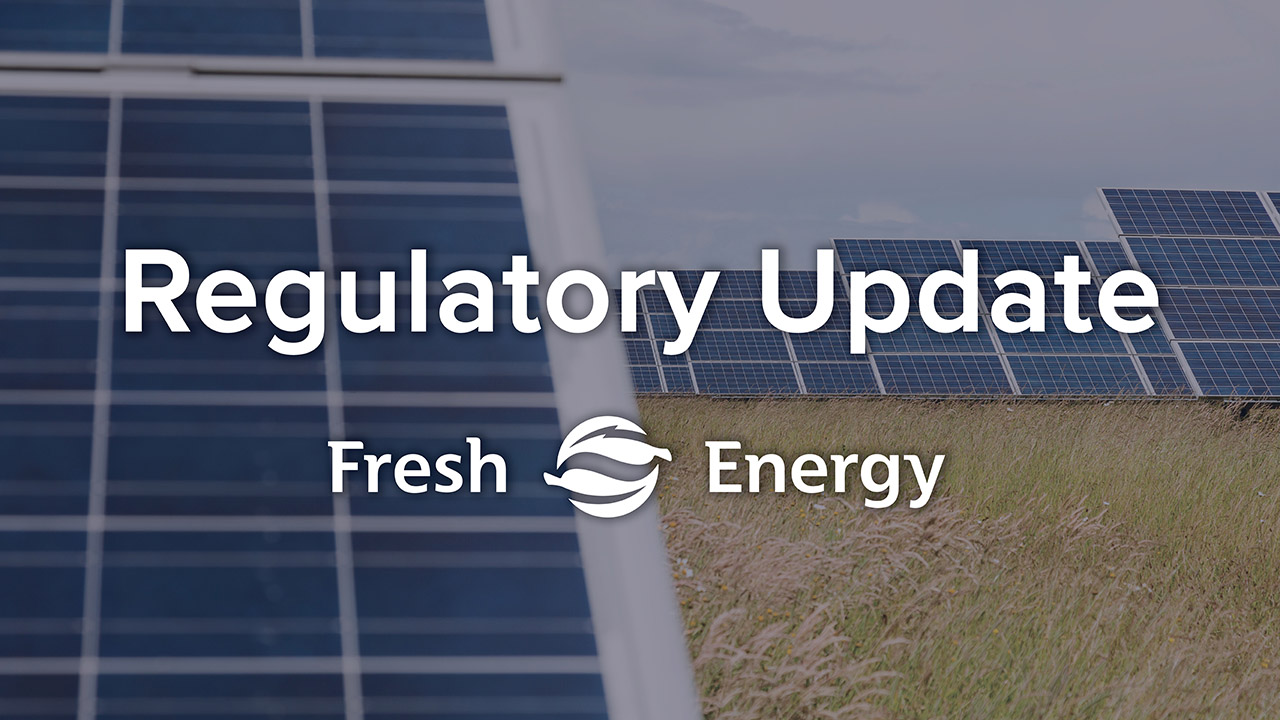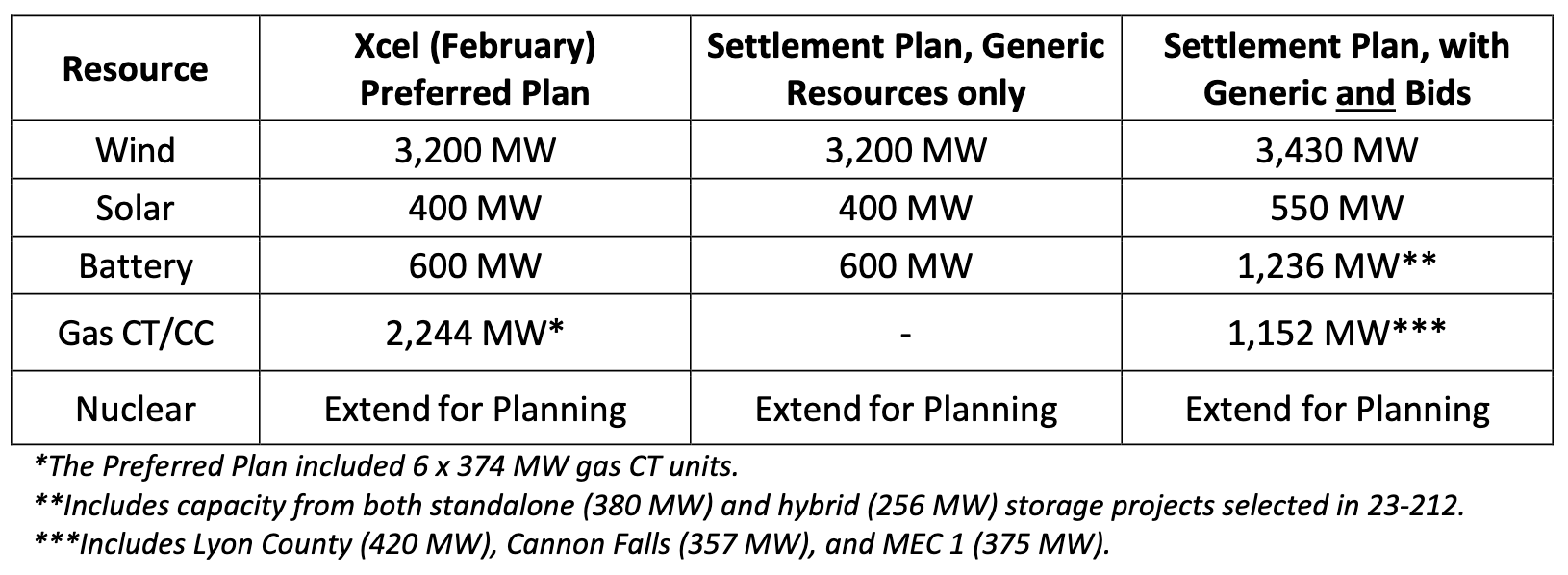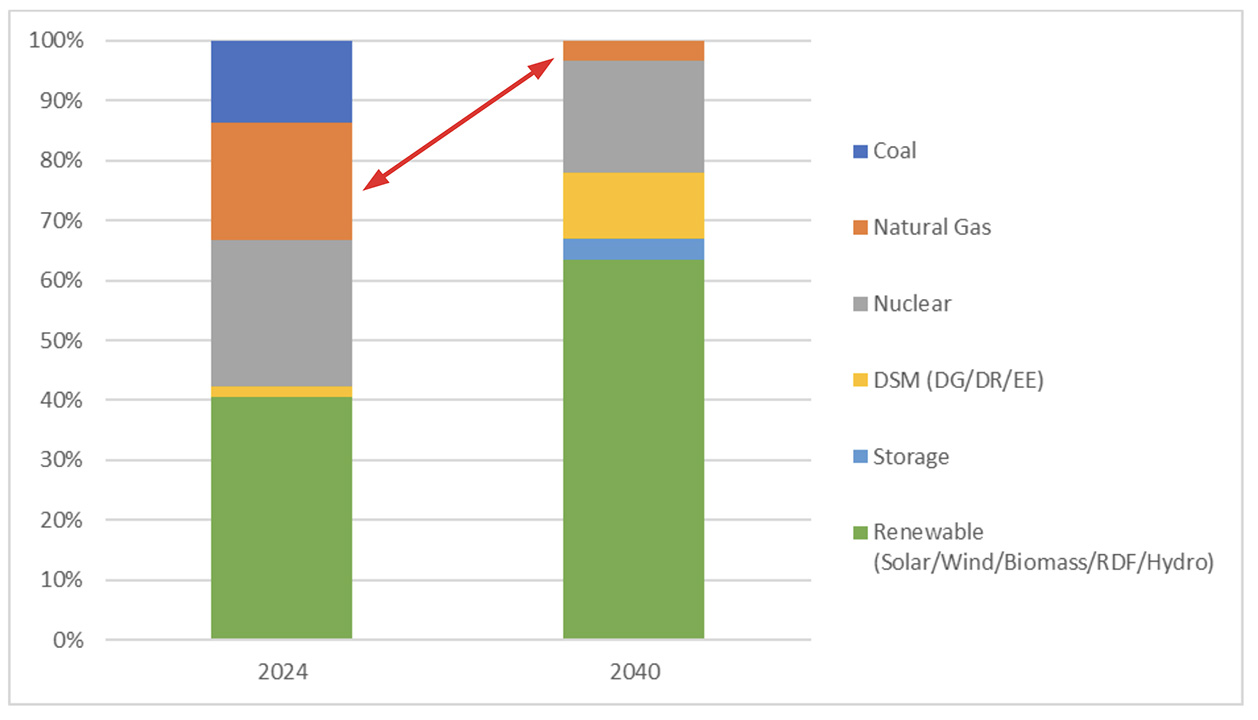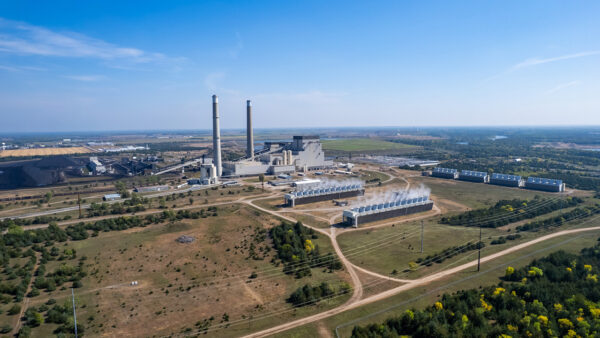
The Minnesota Public Utilities Commission (Commission) approved Xcel Energy’s 2024 Integrated Resource Plan (IRP, or plan) on February 20, 2025, continuing a course for significant clean energy expansion across the state. Thanks in large part to detailed technical analysis by Fresh Energy and our partners, the plan dramatically scales up renewable energy while replacing Xcel’s initial proposal for six new natural gas plants with a single, new facility. This shift will significantly reduce Minnesota’s greenhouse gas emissions and accelerate progress toward the state’s 100% clean electricity law.
Fresh Energy and our partners shaped this long-range plan (Docket #24-67) through extensive modeling that demonstrated how Xcel could reliably serve customers with more renewable energy and fewer gas plants. The final decision advances Minnesota’s clean energy transition by continuing Xcel’s retirement of its coal plants, setting strict limits on natural gas expansions, and accelerating deployment of wind, solar, and storage technologies.
If you would like to learn more about IRPs, check out our quick explainer blog post What’s up with Integrated Resource Planning?
A major clean energy buildout
The Commission’s decision authorizes Xcel Energy to:
- Add 3,300 megawatts (MW) of new wind by 2030
- Add 1,550 MW of new solar by 2030
- Add 1,230 MW of new battery storage by 2030
- Launch the utility’s first virtual power plant program
About 1,000 MW of these projects are ready for immediate construction. The plan also extends operations at Xcel’s nuclear plants into the 2050s while maintaining the utility’s commitment to retire its coal fleet by 2030. A single new natural gas plant in Lyon County, Minnesota is included. It is planned to operate 5-10% of the year to meet peak demand when renewable generation is low.
Table 1: Comparison of Xcel Energy’s Preferred Plan and Settlement Plan, by Fuel Type

How we got here: Fresh Energy’s technical analysis reshapes the plan
When Xcel Energy filed its initial proposal in February 2024, it included 2,244 MW of new natural gas plants—enough fossil fuel infrastructure to require six new facilities. The plan continued Xcel’s commitment to retiring its fleet of coal plants by 2030, as well as adding approximately 4,700 MW of renewable to the grid, 1,700 MW of demand-side management including energy efficiency and demand response, and 600 MW of battery storage by 2030.
This was an objectively ambitious plan, yet Fresh Energy and our Clean Energy Organization (CEO) partners, Clean Grid Alliance, Sierra Club and Minnesota Center for Environmental Advocacy undertook an analysis looking at different balances of utilizing our regional grid versus building more infrastructure ourselves. While this may seem like a small detail, that balance has large ramifications on Xcel’s plan.
Our team, working with national expert consultants from Energy Futures Group, Telos Energy, and Applied Economics Clinic, conducted sophisticated modeling that showed how Xcel could leverage its position within the Midcontinent Independent System Operator (MISO) regional grid to strike a balance of maintaining reliability, minimizing new fossil infrastructure, and managing cost.
Table 2: Cost Savings of Market Access Models, 2024-2050

Fresh Energy and the CEOs then filed an alternative Five-Year Action Plan for Xcel Energy’s 2024 Integrated Resource Plan at the Commission. This plan, based on extensive research, modeling, and evaluation, concluded that Xcel Energy should not pursue six new peaker plants to meet demand and reliability needs as it transitions away from coal. Instead, CEOs found that the utility can leverage existing gas resources, while adding more renewable energy and storage to meet its goals for a reliable, cost-effective, and clean energy future.
We also included other considerations in Xcel’s long-range plan. We appreciate Xcel’s work in its last resource plan to consider equity in its IRPs, which led to concrete outcomes like the Automatic Bill Credit Pilot Program filed by Xcel in 2024. We urged Xcel to continue focusing on how resource plans can benefit everyone by targeting energy efficiency efforts toward low-income communities, advancing clean energy workforce development opportunities, growing workforce diversity, and considering investments in disadvantaged communities.
We also provided recommendations on how Xcel can ensure reliability and greenhouse gas emission reductions when planning new large load forecasts, like data centers.
October settlement sets stage for major clean energy wins
Fresh Energy’s technical work set the stage in October 2024 for a comprehensive settlement with more clean electricity. Working with Clean Grid Alliance, Sierra Club, Minnesota Center for Environmental Advocacy, the Minnesota Department of Commerce, Xcel Energy, labor unions, and energy developers, we secured approval for four major clean energy projects:
- Two standalone storage facilities totaling over 300 MW
- A 230-MW wind plus storage project
- A 170-MW solar plus storage project
Notably, the settlement eliminated Xcel’s proposed gas plant in Fargo, North Dakota, while authorizing only the smaller, 375-MW Lyon County facility—a dramatic shift from the utility’s initial plan for six new gas plants.
The Commission’s approval includes several forward-looking provisions that Fresh Energy advocated for throughout the process. Xcel Energy must:
- Expand energy efficiency programs for low-income households, which have seen low participation rates,
- Develop plans to diversify its workforce and contracted services with communities, organized labor, and other stakeholders,
- File a proposal for a new model of planned and scaled distributed solar and storage capacity procurement by October 3, 2025, and
- Explore thermal battery technology through a pilot program with Rondo Energy, filing its proposal by December 31, 2025.
Fresh Energy is pleased with the approved settlement and is excited about green-lighting four new clean energy projects that stem from the Firm Dispatchable docket that are ready to be built. We are also pleased that Xcel’s long-range plan will incorporate thousands of megawatts of clean electricity, as well as leveraging existing resources, to avoid a significant amount of natural gas.
Figure 1: Xcel’s 2024 and 2040 Settlement Agreement Nameplate Energy Mix

We appreciate the work of other parties involved in this settlement to help achieve an outcome that helps Minnesota cost-effectively and reliably incorporate clean electricity to meet its decarbonization targets.
What’s next?
The Commission’s decision on Xcel’s long-range plan demonstrates how technical analysis and collaborative advocacy can accelerate the shift to clean energy while ensuring reliability and affordability for all Minnesotans. Engaging in regulatory proceedings has been a key way Fresh Energy has advanced our mission for decades, and we are pleased with the Commission’s decision to replace Xcel’s proposal for six new natural gas plants with more wind, solar, and storage.
Fresh Energy will continue engaging in regulatory proceedings to swiftly and equitably advance Minnesota’s clean energy transition. Our next focus: Minnesota Power’s resource plan in March 2025, which presents unique opportunities to clean up the electricity supply for some of the nation’s largest industrial customers.


